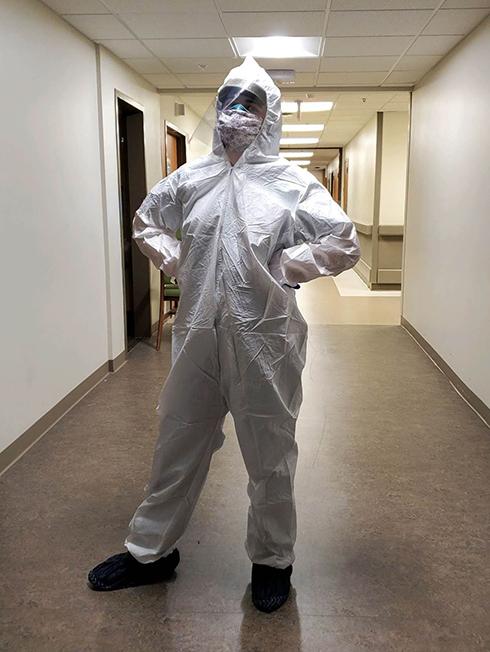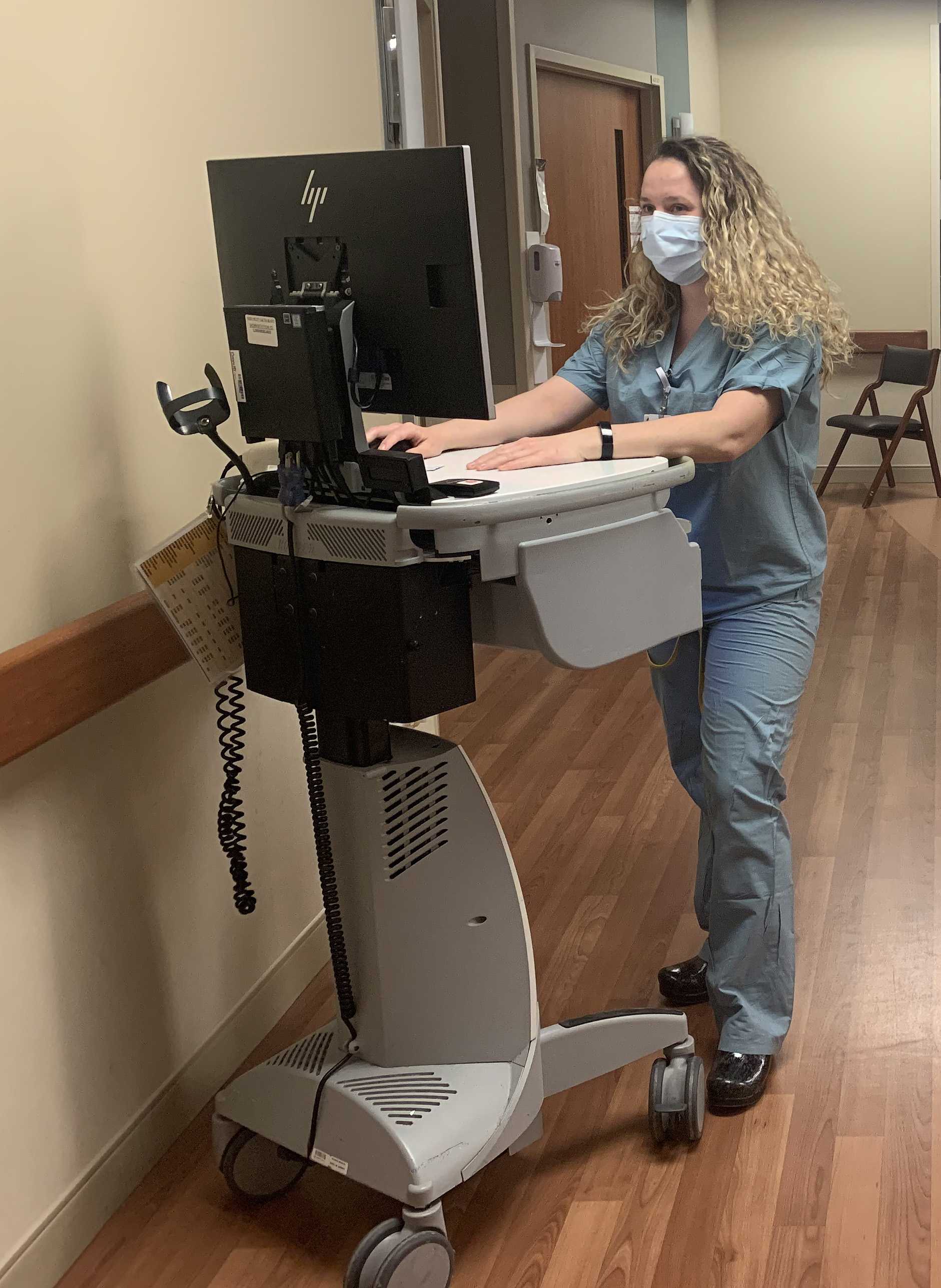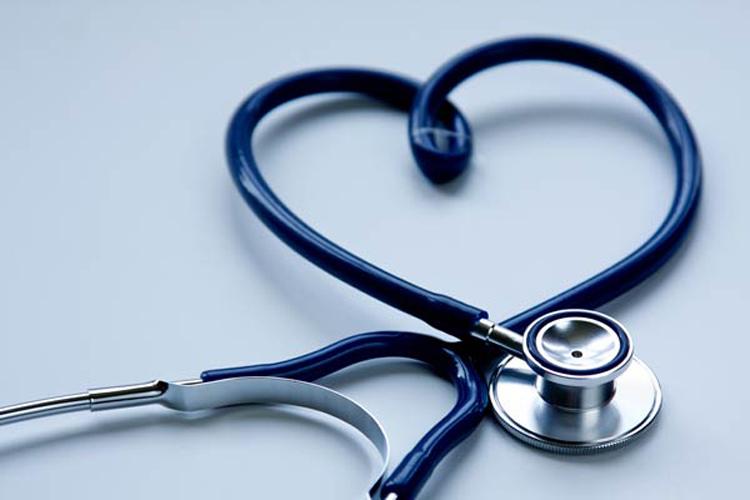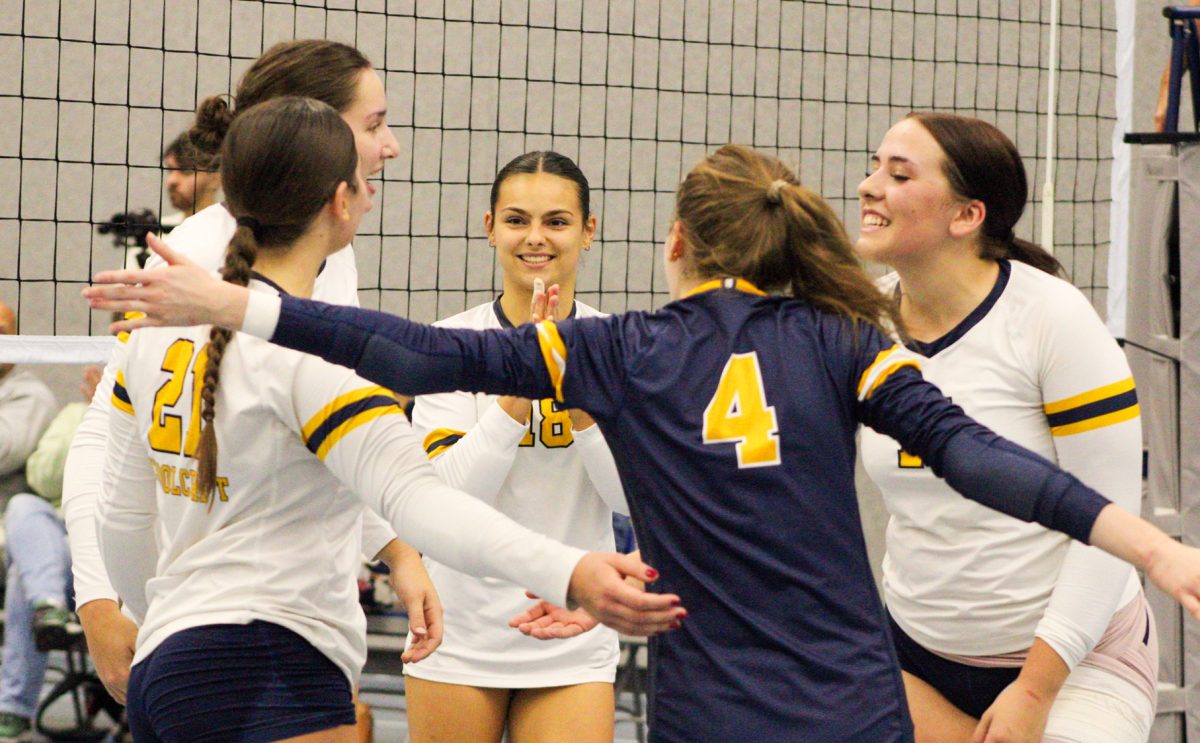No man’s land
Nursing alumni offer insight into COVID-19 pandemic
June 2, 2020
During World War I, the area between home and enemy trenches was coined ‘No Man’s Land’ due to its motionless, foreboding atmosphere. Although it appeared to be a patch of neutral ground, it was an area that soldiers avoided unless necessary. The same idea can be applied to hospitals as they were once a place where the ill went for treatment and recuperation. Since the COVID-19 pandemic’s climax, hospitals are comparable to the aforementioned warzone. Nurses and physicians fighting, day and night, to protect the lives of the infected and themselves from invisible, underestimated contagion.
“COVID-19 is a monster of a disease because of the sneaky onset and how quickly it can turn a walking talking person into a sedated patient on a ventilator,” states 22-year-old Registered Nurse and Schoolcraft alumnus, Ann Wellman. Wellman is also a former Photo Editor of the Schoolcraft Connection. “Thankfully, The Schoolcraft nursing program is very thorough, one of the first lessons was how to properly wash your hands. This was followed by the proper ways to don and doff our personal protective equipment (PPE).”

Wellman graduated from the Schoolcraft nursing program in July 2019 and was hired on her pulmonology floor at Beaumont Farmington Hills from her former position as a nurse assistant. This newly ordained nurse was thrust into combat just before the Coronavirus was classified as a pandemic when her floor shut down.
Another alumnus and a former Schoolcraft Connection Editor-in-Chief, Elaine Gerou, is facing similar circumstances as a nurse at St. Mary Mercy Hospital after graduating just a year and a half ago.
“My education at Schoolcraft did a great job in preparing me for my nursing career. I have never seen anything like the COVID-19 pandemic before though and no job training or schooling could have mentally prepared me in my opinion.” Gerou commented.
According to both professionals, the virus is diagnosed through a nasal swab test. This entails advancing a cotton swab type stick into the sinus cavity in order to safely collect respiratory droplets for testing. There is currently no cure for the virus as of yet, but professionals’ soldier on in efforts to find treatments to improve prognosis. This includes a drug that was formerly used to treat malaria and prescribing Vitamin C and Zinc tablets to increase immune system activity. However, the most important thing is keeping patients’ respiration stable and if on a ventilator, to wean them as soon as possible.
Gerou offered insight on the emotional strain on both patient and healthcare providers.

“It is scary, worrisome, and sad treating both confirmed patients and suspected patients who are waiting for test results. These people are all alone; their family and friends cannot come to see them and many staff members don’t want to go into the rooms more than they absolutely need to in fear of exposure. It’s scary when they cough violently and there is little you can do to help while waiting for the cough suppressant you gave to kick in [and] and hoping your PPE is doing its job to protect you. It’s scary to see the fevers of some patients not fully subside with Tylenol [and] it worries me when patients struggle to breathe even with many liters of supplemental oxygen because I know what may come next. It is heart throbbing to know people are dying without any loved ones by their side and that some never get the closure of saying goodbye,” states Gerou.
Due to COVID-19’s high contractibility via respiratory droplets (sneezing, coughing, etc.), it’s vital that health professionals wear and utilize fresh personal protection equipment (PPE) for each patient they come in contact with. However, the virus was spreading so rapidly and the demand for these materials exceeded the United States’ supply for some time. Thus, providers had to improvise in stretching the materials they had, unless new shipments arrived or donations came in. These conditions varied in severity depending on the hospital’s resources and the number of Coronavirus cases they had in the house.
“We were in a spot where we must reuse our personal protective equipment. I am so blessed to have generous co-workers and friends because I received reusable cloth PPE like masks and scrub caps.” Wellman said. “I choose to wear the cloth mask over my N95’s to protect them from moisture when I reuse them… My heart goes out to the nurses that go to work knowing they have children and loved ones at home that are at serious risk of infection. This is not easy for anyone.”
As cases and deaths rose dramatically, Governor Gretchen Whitmer placed Michigan under a stay at home order. That prohibited people from leaving their homes unless they were considered essential workers or if they were purchasing essential items like groceries. Everyday more cases of COVID-19 were diagnosed and more casualties were reported. These intense measures were taken for the safety and well-being of citizens and often lead people feeling helpless in terms of how they could support essential workers like the healthcare professionals on the front lines.
“This virus spreads easily and making exceptions to this lockdown is what will ultimately pass the virus to someone else,” Gerou said. “Washing your hands frequently, wearing a mask out in public and staying home as much as possible is the best assistance people can give us.”
In addition to these preventative measures, hospitals offered suggestions for keeping busy and contributing to the effort to slow the virus as professionals strived toward better treatments and a vaccine.
“Things that I am personally doing during my down time is learning new skills and developing old ones. I highly recommend skills like yoga, meditation and other such activities that kind of clear your head and destress.” Wellman said.
As we enter the month of June, our lockdown is being lifted and our state is starting to open back up its non-essential businesses. There is a downward trend of COVID-19 numbers and hospitals are now seeing lower numbers of patients needing assistance with COVID-19 symptoms. However, everyone still needs to be cautious as we open our state back up and return to work. Social distancing, disinfecting and hand washing will continue to be important measures we will need to take for the time being to help keep this virus under control.
For more information on how to support frontline workers, please consider visit neighboring hospitals’ websites.








